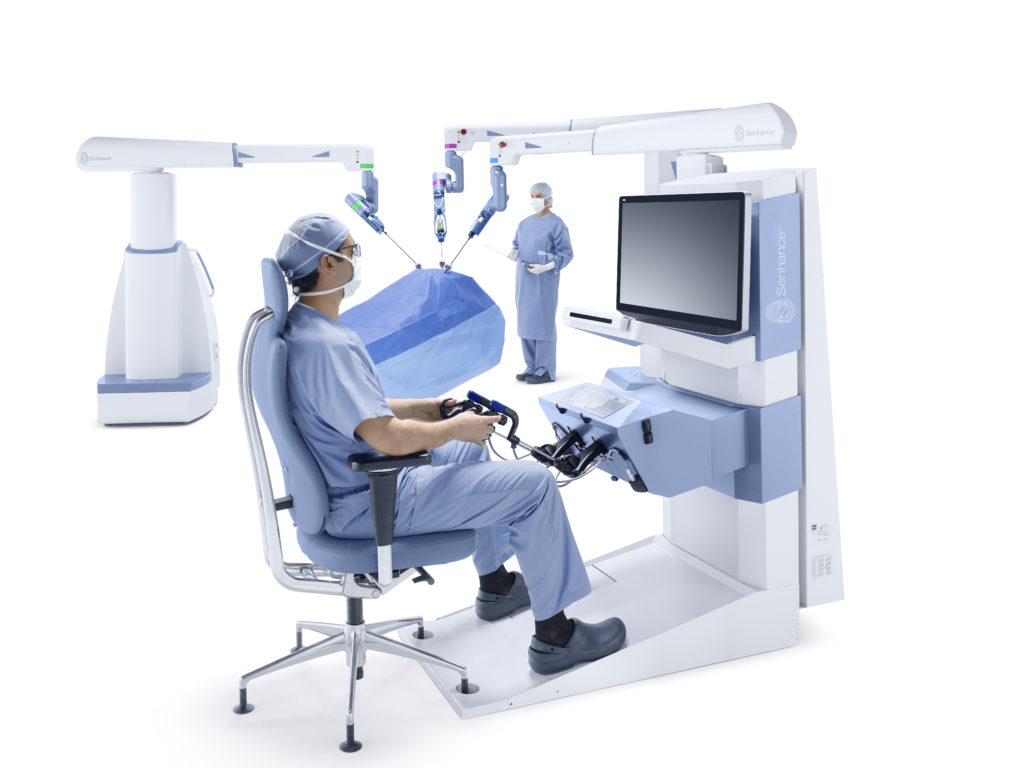Ice ages ended with a tilt of the planet
Ahead at the library: ‘Robot petting zoo,’ author chat and more
Intelligent Surgical Unit machine vision guidance from TransEnterix gets FDA approval
TransEnterix Surgical Inc. today announced that the U.S. Food and Drug Administration has granted it 510(k) clearance to add the Intelligent Surgical Unit, a machine vision enhancement, to its Senhance robot-assisted surgical system.
Senhance is intended to assist in the accurate control of laparoscopic instruments for procedures including gynecological surgery, colorectal surgery, cholecystectomy, and inguinal hernia repair. It is approved for use in the U.S., the EU, Japan, and select other countries.
The Intelligent Surgical Unit uses artificial intelligence to enable the system’s camera to automatically move for a surgeon during a procedure. It can respond to commands and recognize certain objects and locations in the surgical field. Research Triangle Park, N.C.-based TransEnterix secured the clearance only two months after filing.
“We are pleased to have received this important clearance earlier than expected,” stated Anthony Fernando, CEO of TransEnterix. “Machine vision is the next major advance in digital surgery.”
Intelligent Surgical Unit optimizes vision-based control
“Our system is designed to significantly advance the sensing capabilities of computer-assisted surgery,” said Fernando. “With this hardware and software system, the Senhance system will gather and interpret visual information from the surgical field.”
“The capabilities now cleared will be focused on optimizing visualization and camera control in ways never before offered in robotic or digital surgery,” he added. “These initial capabilities represent the first step in our journey to bring the benefits of augmented intelligence and machine vision to surgery.”
Eventually, the system could have an overwatch feature in which the system would use scene cognition and image analytics to provide a surgeon suggestions based on accumulated laparaoscopic experience around Senhance.

The Intelligent Surgical Unit is designed to help doctors visualize the surgical field with the Senhance surgical system. Source: TransEnterix
“This is the beginning of a new era in digital surgery,” said Dr. Amit Trivedi, chair of surgery at Hackensack Meridian Health Pascack Valley Medical Center in New Jersey and a participant in the design and usability studies for the 510(k) submissio. “Surgery is the skilled real-time application of vision, experience, precise motion, and decision making. The opportunity to use a computer to see aspects of the field and guide surgery is enormous. I am eager to utilize machine vision to better control the camera seamlessly during my surgeries.”
The Intelligent Surgical Unit is compatible with both the global installed base of Senhance surgical systems and with third-party vision systems that they support.
Last year, TransEnterix sold only three Senhance systems, which which boast haptic feedback, surgeon camera control via eye sensing and improved ergonomics.
Last month, TransEnterix said it planned to raise $25 million in a stock purchasing agreement. In addition to its push into AI with the Intelligent Surgical Unit, the company been experimenting with robot leasing agreements to encourage adoption of its surgical robotics.
Editor’s note: This article first appeared on MassDevice, a sibling site to The Robot Report focusing on medical devices.
The post Intelligent Surgical Unit machine vision guidance from TransEnterix gets FDA approval appeared first on The Robot Report.